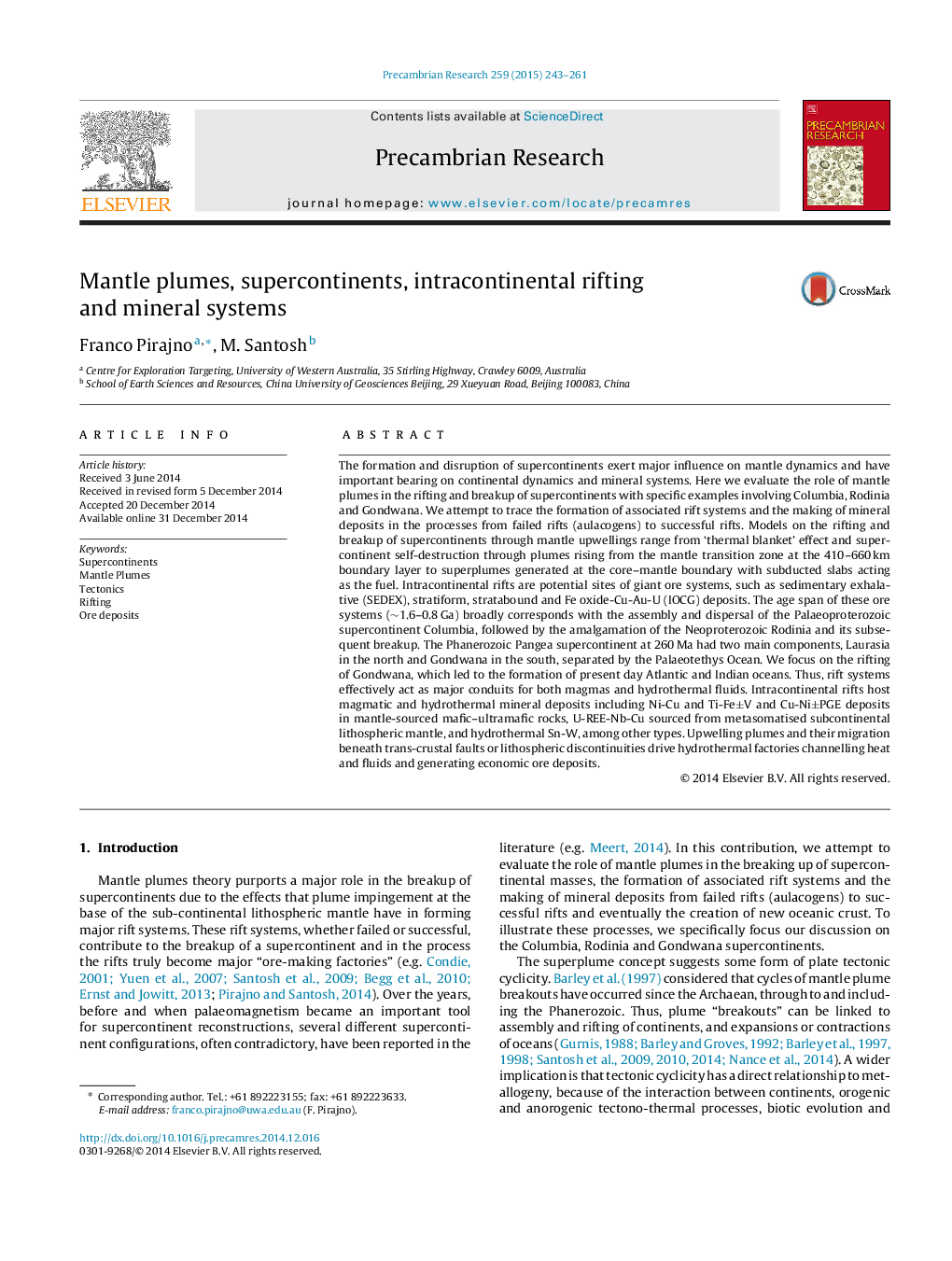| Article ID | Journal | Published Year | Pages | File Type |
|---|---|---|---|---|
| 4722841 | Precambrian Research | 2015 | 19 Pages |
•Supercontinents rifting and breakup.•Intracontinental rift systems as primary locales for ore systems.•Mantle plumes initiate rifting of supercontinents.•Examples of continental rifting: Columbia, Rodinia and Gondwana.•Examples of ore systems related to the rifting of Columbia, Rodinia and Gondwana.
The formation and disruption of supercontinents exert major influence on mantle dynamics and have important bearing on continental dynamics and mineral systems. Here we evaluate the role of mantle plumes in the rifting and breakup of supercontinents with specific examples involving Columbia, Rodinia and Gondwana. We attempt to trace the formation of associated rift systems and the making of mineral deposits in the processes from failed rifts (aulacogens) to successful rifts. Models on the rifting and breakup of supercontinents through mantle upwellings range from ‘thermal blanket’ effect and supercontinent self-destruction through plumes rising from the mantle transition zone at the 410–660 km boundary layer to superplumes generated at the core–mantle boundary with subducted slabs acting as the fuel. Intracontinental rifts are potential sites of giant ore systems, such as sedimentary exhalative (SEDEX), stratiform, stratabound and Fe oxide-Cu-Au-U (IOCG) deposits. The age span of these ore systems (∼1.6–0.8 Ga) broadly corresponds with the assembly and dispersal of the Palaeoproterozoic supercontinent Columbia, followed by the amalgamation of the Neoproterozoic Rodinia and its subsequent breakup. The Phanerozoic Pangea supercontinent at 260 Ma had two main components, Laurasia in the north and Gondwana in the south, separated by the Palaeotethys Ocean. We focus on the rifting of Gondwana, which led to the formation of present day Atlantic and Indian oceans. Thus, rift systems effectively act as major conduits for both magmas and hydrothermal fluids. Intracontinental rifts host magmatic and hydrothermal mineral deposits including Ni-Cu and Ti-Fe±V and Cu-Ni±PGE deposits in mantle-sourced mafic–ultramafic rocks, U-REE-Nb-Cu sourced from metasomatised subcontinental lithospheric mantle, and hydrothermal Sn-W, among other types. Upwelling plumes and their migration beneath trans-crustal faults or lithospheric discontinuities drive hydrothermal factories channelling heat and fluids and generating economic ore deposits.
Graphical abstractFigure optionsDownload full-size imageDownload as PowerPoint slide
